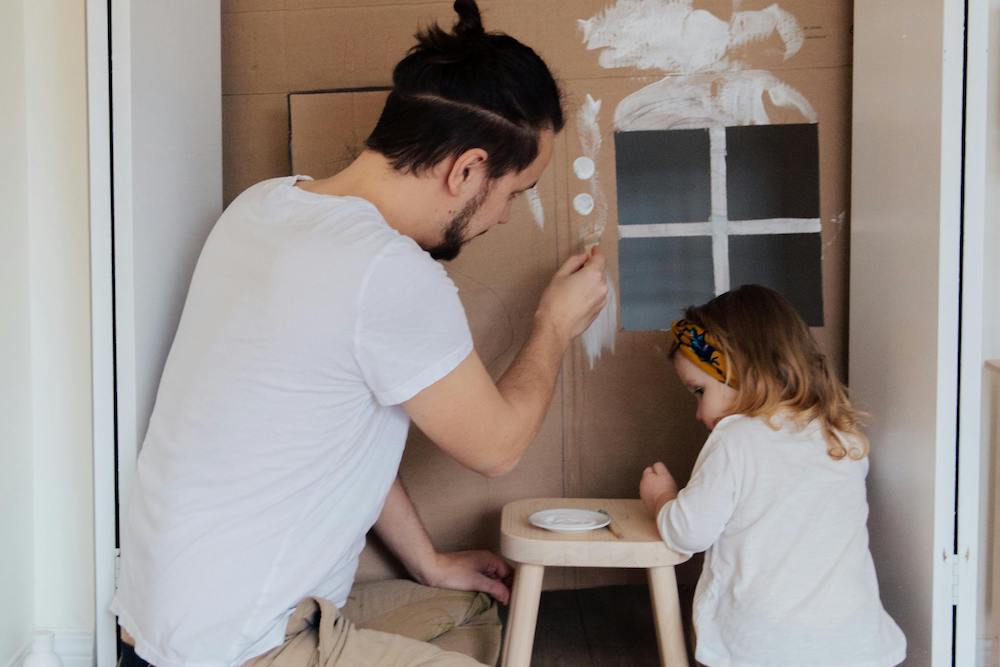Play is a child’s first and most natural way of communicating, so play therapy meets them right where they are—offering a safe and supportive space to build confidence, explore how they relate to others, and process difficult experiences. One of the most powerful aspects of play therapy is its ability to help children explore and express complex emotions they may not yet have the words to articulate. The presence of a trained play therapist and thoughtfully chosen toys and creative materials creates a non-threatening environment where children can express themselves freely and work through their feelings at their own pace. Let’s take a closer look at the role of the therapist and the materials—ending with a few practical examples of how both work together in practice.
The Role of the Play Therapist
At the core of play therapy is a trusting relationship between the child and the therapist. While toys, games, and art materials are the tools, it’s the connection with a supportive, attuned adult that makes the real difference. When children feel safe and seen, they’re more able to express emotions, explore difficult experiences, and try new ways of coping—all through the language of play.
Play therapists are trained to meet each child with warmth, curiosity, and respect. There are many different approaches to play therapy—some are more child-led, while others involve more guidance from the therapist, depending on the child’s needs and the goals of therapy. In “non-directive” forms of play therapy, the child takes the lead, and the therapist follows—allowing the child to express whatever needs to come out, in their own way and at their own pace. In more “directive” approaches, the therapist may introduce specific activities designed to support emotional growth or address particular concerns. Whether the therapist is following the child’s lead or gently guiding the process, their role is to create a safe emotional space and to stay present and responsive to what the child is communicating—both through words and through play.
The Role of Toys and Creative Materials
While the relationship with the therapist is the foundation of play therapy, the toys and creative materials in the room also play an essential role. These are more than just playthings—they are tools for communication, storytelling, problem-solving, and healing. Because children often don’t yet have the words to fully express what they’re thinking or feeling, the materials give them a way to show it, explore it, and work through it in a safe and symbolic way.
Play therapists use a thoughtfully chosen set of items—like dolls, puppets, sand trays, building blocks, art supplies, and games—that invite children to express themselves in different ways. Some materials may encourage storytelling or role-play, while others may offer space for movement, creativity, or a sense of control. The selection is intentional, designed to support a wide range of emotions and experiences.
In a session, this might look like a child using a dollhouse to act out family dynamics, creating a drawing that expresses a fear they can’t quite name, or burying and unburying figures in the sand tray to show themes of loss and safety. A child who feels overwhelmed or out of control might line up blocks in neat rows, tear paper into small pieces, or repeatedly play out a scenario with animals or action figures. These actions aren’t random—they’re meaningful expressions of the child’s inner world.
Whether the therapist is taking a non-directive approach and letting the child choose freely, or using a more structured activity to support a particular goal, the toys and creative materials are there to meet the child where they are. In the hands of a trained play therapist, these simple items become powerful tools for connection, insight, and emotional growth.
Putting It All Together: Play Therapy in Practice
The heart of play therapy lies in the way the therapist and the materials come together to create a space where children can express what’s going on inside—often without needing to say a word. Here are a few examples of how this might look in a session:
- An anxious child who often appears oppositional or defiant might enter a child-centered play therapy session and begin organizing toys into rigid patterns or taking charge of the play with strict rules. Rather than correcting the behavior, the therapist follows the child’s lead with warmth and curiosity, recognizing that the need for control may be the child’s way of coping with underlying anxiety. Over time, the therapist helps the child feel safe enough to let go of some of that control and try new ways of relating and expressing.
- A child navigating the emotional impact of their parents’ divorce may turn to the sand tray to express what they can’t say out loud. They might create two separate homes in the sand, place figures of themselves apart from one parent, or bury objects to represent hidden feelings. The therapist doesn’t rush to interpret but gently reflects what they see, helping the child make sense of their experience in a way that feels safe and validating.
- A child overwhelmed by anger might use paint, markers, or clay to express their emotions physically—scribbling in dark colors, tearing paper, or shaping jagged forms. Rather than stopping the behavior, the therapist stays present and supportive, giving the child permission to release those big feelings through the art. As trust builds, the therapist can begin helping the child name those feelings and find more regulated ways to express them.
In Conclusion
Play therapy gives children a developmentally appropriate way to express themselves, explore their inner world, and make sense of their experiences. Within the safety of a trusting relationship and the freedom of creative play, children can process complex emotions in a way that feels natural and empowering. What may look like simple play from the outside is often meaningful emotional work on the inside. For families seeking support, play therapy offers a gentle, effective path toward healing, growth, and greater emotional well-being.


